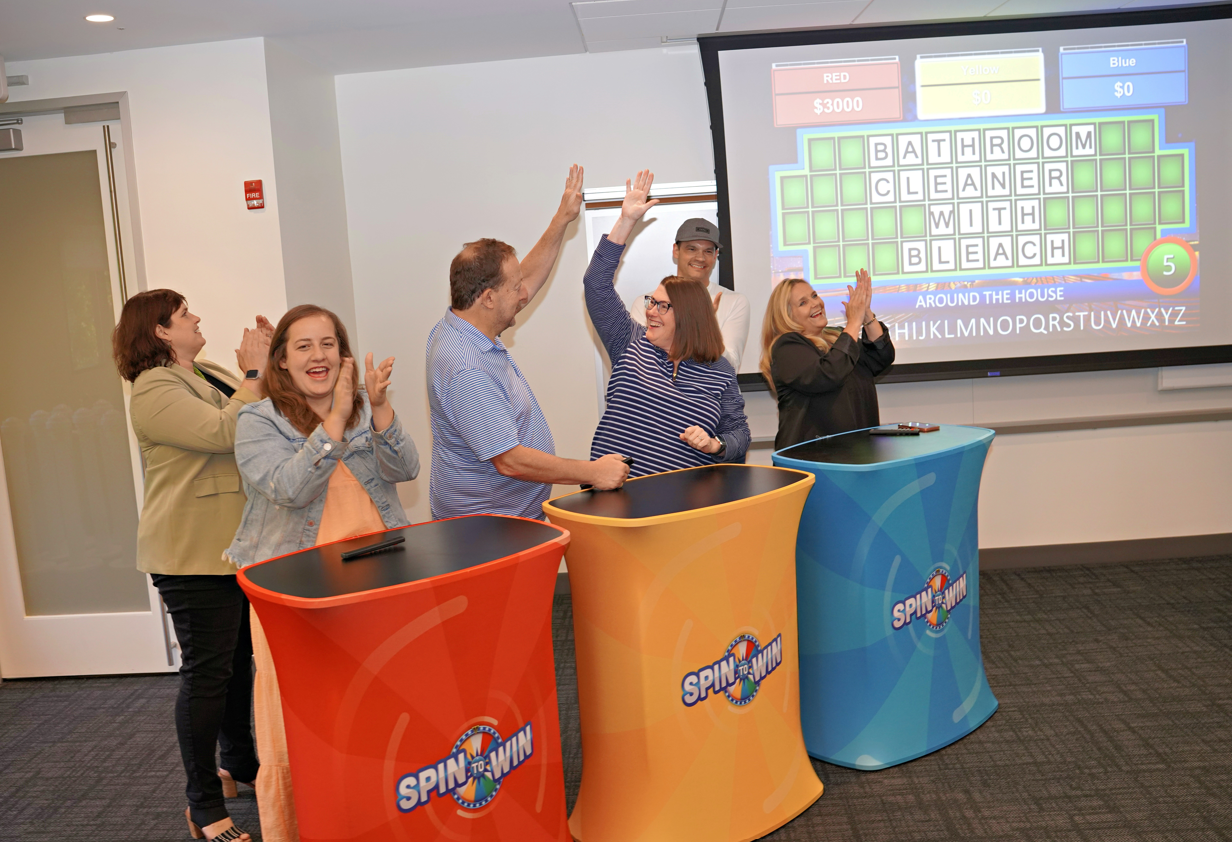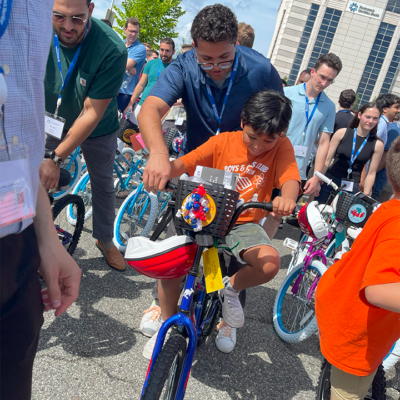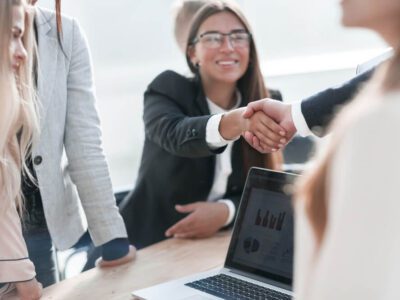It’s a team meeting day, and some of your employees have shown up with disruptive behaviors in tow. Ed won’t let anyone get a word in edgewise. And a few employees at the end of the conference table are holding an obvious gossip session – as they point and laugh at Ed. Not to mention about half the room keeps rolling their eyes and checking their watches. A common case of disruptive behavior in the workplace.
Of course, anyone can have an off day. But persistent, disruptive behavior in the workplace can wreak havoc on your company culture, employees’ morale, motivation, engagement, productivity, and more. Depending on the severity of the issue, it could even mean you’re left with a higher employee turnover rate and costly legal issues. Many people don’t realize the true impact that behavior in the workplace has on company culture, engagement, retention, and more.
To avoid the ripple effect of disruptive behavior, you’ll want to take both preventative and proactive measures to nip these issues in the bud.
Let’s cover five of the most common disruptive behaviors in the workplace. We’ll also take you through the consequences that disruptive behavior can bring to your company and ways to manage and prevent these behaviors now and in the future.
5 Common Disruptive Behaviors in the Workplace
Disruptive behavior at work can come in many forms and levels of intensity. From sarcasm to rude comments to bullying or even violence, you may have witnessed all of the above. We’ve compiled the five most common examples of disruptive behavior in the workplace you’ll need to look out for.
1. The Negative Nancys and Neds
Nobody can be positive 100% of the time. But, some employees tend to focus on everything and anything that is or could go wrong–from complaints to rude comments and everything in between.
If you have a Negative Nancy or Ned in your ranks, you know what we mean. You can count on them to make snarky comments and ultimately leave a negative vibe with their negative workplace behavior in the air.
Plus, we all know that one negative apple can spoil the whole bunch. In short, negativity can spread like wildfire. If this happens, it can bring down your other employees. And low morale is the last thing you want. So, you’ll need to keep an ear out for this disruptive behavior.
2. The Rumor Starters & Gossipers
Rumors can spread fast in any workplace. Some employees tend to be a bit more busy-body-oriented than others. Besides, when a rumor spreads, it tends to: A. Disconnect from the facts; and B. Damage or even exclude the person at the butt of the rumor. Not to mention–it’s unprofessional!
Gossip can lead to an atmosphere of mistrust and that won’t help your employees’ morale, collaboration, or teamwork. Instead, you’ll want to be proactive, address the rumor mill early, lead by example, and handle this disruptive behavior professionally.
3. The Toxic One-Uppers, Intimidators, & Bullies
Some forms of disruptive behavior in the workplace are more overt than others. That doesn’t mean the subtle forms are any less harmful to your company culture, though. Let’s take a closer look at a few examples of subtle versus overt disruptive behavior:
Subtle Toxic Behavior
- Speaking over/interrupting a colleague
- Taking credit for another colleague’s idea
- Putting down a colleague
- Gaslighting
Overt Toxic Behavior
- Doling out unfair workloads.
- Offering unwarranted, poor performance evaluations.
- Shouting
- Making threats
- A physical expression of anger–slamming doors, throwing a mug, etc.
- Verbal harassment
- Sexual harassment
- Intimidation or violence of any kind
4. The Always-Late & Absent Employees
Some employees who always turn up late or call out at the last minute can create more work for their colleagues. Nobody wants to do the work of two people. This disruptive behavior can lead to conflict and resentment between your employees.
So, if you notice chronic tardiness or absenteeism, it’s best to check in with the employee to determine what’s going on and if an alternative solution, such as a paid or unpaid leave of absence, might remedy the reason for their absence.
5. The Fraternizing Team Members
Did you hear that such and such got together with so and so over the holiday season? One minute, love is in the air. And the next? A breakup. Before you know it, their presence is awkward for everyone in the office, and it appears some employees are even taking sides.
That type of division can distract employees from their professional responsibilities. It can also interfere with your employees’ ability to work together. Even more, depending on who’s fraternizing, it can create an unfair power dynamic. You’ll want to make sure your anti-fraternization policy is clear and up-to-date.
How Disruptive Behaviors Are Impacting Your Workplace
Any one or combination of the above (or other) disruptive behaviors can negatively impact your workplace. Here’s a list of the many ways disruptive behavior can harm your employees and your company, especially when left unchecked:
- Erodes employee morale
- Creates a company culture of negativity and mistrust
- Interferes with teamwork and collaboration
- Impedes motivation
- Inhibits productivity
- May increase absenteeism so employees can avoid the disruptive behavior
- Disruptive behavior can lead to increased employee turnover
- Makes your company vulnerable to legal issues/liability
- Depending on the severity, may negatively impact your company’s reputation
How to Manage Disruptive Workplace Behavior
Have you realized that disruptive behavior is at the root of some of your employees’ issues? While there isn’t a one-size-fits-all solution for every problem, there are some best practices you can commit to.
Be Proactive
The moment you notice disruptive behavior, take action. That could mean doing any one or a combination of the following:
- Meet with the employee privately and discuss the issue in clear terms–focusing on facts.
- Remain open-minded and seek their input about how to best change the behavior.
- Depending on the severity of the issue, consider seeking advice from your HR or Legal Departments.
- Commit to offering out-of-the-box team-building activities for all new and seasoned employees. These activities can help them work on empathy, communication, collaboration, and more.
Document the Disruptive Workplace Behavior
This may go without saying, but you’ll need to document any disruptive behavior. Besides, for any potential liability reasons, you’ll want to have a clear and objective list of facts/dates, etc. This is so that when you meet with the employee, you focus on exactly what happened, where, and when. Be sure to keep clear records.
Communicate, Provide Feedback, & Implement Reasonable Solutions
Once you’ve observed and documented the disruptive behavior, you’ll need to meet with the employee privately. During this meeting, it’s important to remain open-minded, stick to the facts/what happened, and communicate your concerns in clear terms.
Likewise, you’ll want to remain empathetic and listen to your employee. Perhaps they’re dealing with bereavement or struggling with a personal crisis. While this may or may not be the case, you’ll want to show them you’re willing to listen to what they have to say.
Once you have time to absorb their input in light of what happened, it may be best to collaborate with them about what they feel might be a reasonable solution. If their suggestions don’t align with the company’s policies, then seek guidance from your HR department about potential next steps.
Offer Additional Training Whenever Necessary
Conflicts can happen between anyone in your company – from managers to employees and executive officers, down the line. Identifying the root cause of the conflict may warrant further professional training and development.
For instance, if an employee struggles to communicate their concerns and, instead, lets their frustration snowball, it may be helpful to offer opportunities where they – along with their team – can hone their communication and collaboration skills.
Invest in Team Building Opportunities
Invest in initiatives that can help repair some of the damage from disruptive behavior. One of the best ways to bring your employees back together as a cohesive team is by providing team-building activities that will help them work on integrity, communication, and more.
Think about it this way–an effective (and fun) team-building activity will not only refocus their attention on working together towards common, professional goals, but it can also encourage them to leave their differences (and pettiness) aside. That alone can have a positive ripple effect!
Positive Workplace Behaviors To Embrace
We have talked a lot about the meaning of disruptive behavior and examples of disruptive behavior at work, but what about positive workplace behaviors? Here are a few positive workplace behaviors to embrace, look out for and promote amongst your team.
1. Effective Communication
Employees that utilize clear and open communication are key assets. Actively listening to peers and providing constructive feedback is a great way to get involved and motivate colleagues.
2. Adaptability
Being flexible and open to change in a work environment is a positive workplace behavior that no one overlooks. Employees that become disgruntle when there is the littlest bit of change causes other employees to feel like they are walking on eggshells, creating a negative environment to work in.
3. Dependability
This one is pretty self explanatory. Make deadlines, fulfilling commitments and consistently delivering high-quality work is a plus in any organization.
4. Respect
Treating colleagues, superiors, and subordinates with respect is a workplace behavior that should be a given. But, as we know not everyone is respectful. Strive to be an employee who promotes this skill and makes other do it to.
5. Empathy
Arguably one of the most important workplace behaviors is empathy. Understanding and considering the feelings and perspectives of others is a necessity. Be sure to offer support and assistance to those when needed, because one day you might need it to.
Ready to Derail Disruptive Workplace Behavior?
Disruptive behavior at work can pop up out of nowhere, even from the employee you least expected it. No matter the situation, it’s best to take preventative and proactive measures to get your employees back on track!
Identifying and addressing disruptive behavior as soon as it happens can mitigate the harm to your employees and your company. And committing to offering your employees team-building activities from the beginning can help them work towards a collective goal and communicate effectively, despite their differences.
















